We arrived home on May 20th from our 50-day camper adventure only to turn around and fly to Washington D.C. on June 8th.
I will begin this blog series where I left off with the last one…Nature. Editing this set of images for this post was WAY more manageable than the previous one. I only had nine days to sort through, not 50!
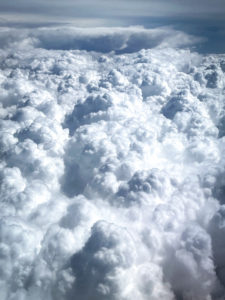 Let us begin with our airplane journey across the U.S. It was clear skies until we flew into Dallas, Texas where we encountered severe thunderstorms. In fact, we found out we were one of the last planes to fly out of DFW that afternoon due to the storms. Whew! Once we got above the clouds though, it was beautiful.
Let us begin with our airplane journey across the U.S. It was clear skies until we flew into Dallas, Texas where we encountered severe thunderstorms. In fact, we found out we were one of the last planes to fly out of DFW that afternoon due to the storms. Whew! Once we got above the clouds though, it was beautiful.
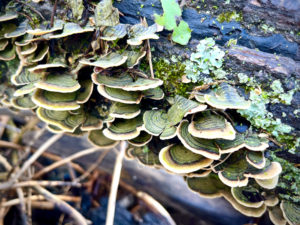
Our first day in the D.C. area found us on the banks of the Potomac hunting for prehistoric shark teeth.
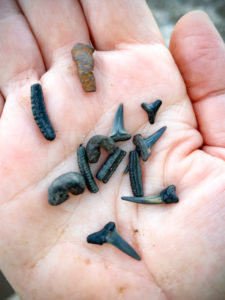 It was amazing how many we found. It makes one wonder how many are out there because this is a popular activity in the area and most folks find plenty.
It was amazing how many we found. It makes one wonder how many are out there because this is a popular activity in the area and most folks find plenty.
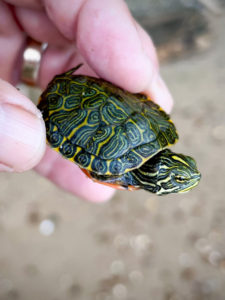 While looking for shark teeth down the beach I found this little guy. Definitely a highlight.
While looking for shark teeth down the beach I found this little guy. Definitely a highlight.
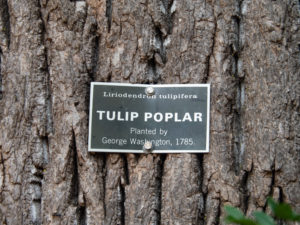 Following the morning at the river and a parking lot, and a tailgate picnic our friends dropped us off at Mt. Vernon, home of George Washington. There will be plenty of pictures later in the Buildings blog but I just wanted to point out how cool it was to touch a tree planted by our first president.
Following the morning at the river and a parking lot, and a tailgate picnic our friends dropped us off at Mt. Vernon, home of George Washington. There will be plenty of pictures later in the Buildings blog but I just wanted to point out how cool it was to touch a tree planted by our first president.
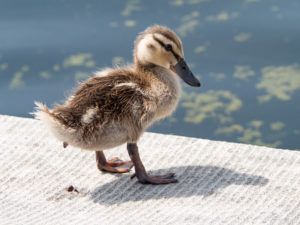
In walking along the National Mall and encountering several ponds and lakes, many with duck families merrily swimming about, we learned that the way the ponds were built is a death trap for little ducklings. They can’t get out as they can’t yet fly. So, volunteers, in their infinite wisdom, came up with duck ramps to help the littles get in and out of the water. Brilliant, right?
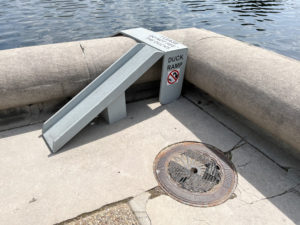
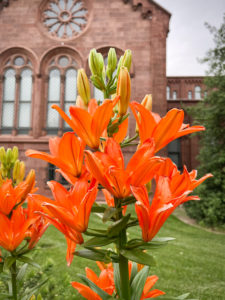
D.C. is certainly not at a loss of places to photograph flowers. They are everywhere, especially in June. The orange Lillies above are in front of the Smithsonian building while the white rose rests against the Vietnam Memorial.
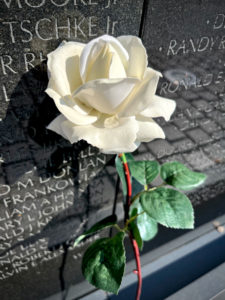
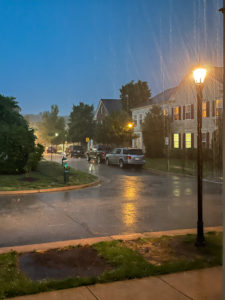
We stayed on base with our friends and Jake, the family dog, at Fort Belvoir. We had a good soaking one evening.
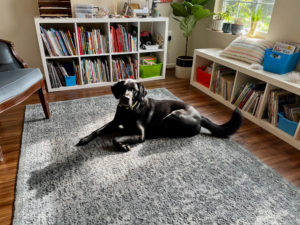
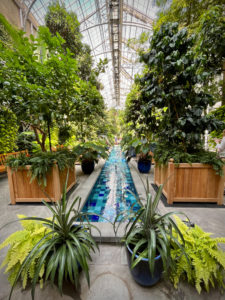
One day we went to the U.S. Botanic Garden. It is on the grounds of the United States Capitol in Washington, D.C. The Botanic Garden is supervised by Congress through the Architect of the Capitol, who is responsible for maintaining the grounds of the United States Capitol. The gardens are open every day of the year, and is the oldest continually-operating botanic garden in the United States.
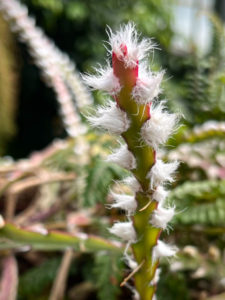
The Conservatory is housed in a Lord & Burnham greenhouse and is divided into separate rooms, each simulating a different habitat. The habitats include The Garden Court, Rare and Endangered Plants, Plant Exploration, Orchid House, Medicinal Plants, Desert, Hawaii, Garden Primeval, Plant Adaptation, Jungle (this is the largest of the rooms, and includes a second-story catwalk so that the jungle canopy may be observed from both below and above), Children’s Garden, and Southern Exposure (courtyard), on the south side of the building, which is surrounded by glass walls, receiving more warmth. It features many plants from the Southeast and Southwest, which would not be able to live in the colder District of Columbia climate if not for the microclimate).
Needless to say, we kept getting lost.
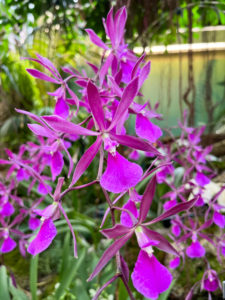
The Washington D.C. area is beautiful. We spent most of our time going to museums and seeing historic buildings. The vegetation in the area is SO different from the desert southwest, so GREEN.
Next week I’ll show you some buildings. Buildings is a HUGE keyword on this trip. Lots of buildings.
Until then, happy shooting!
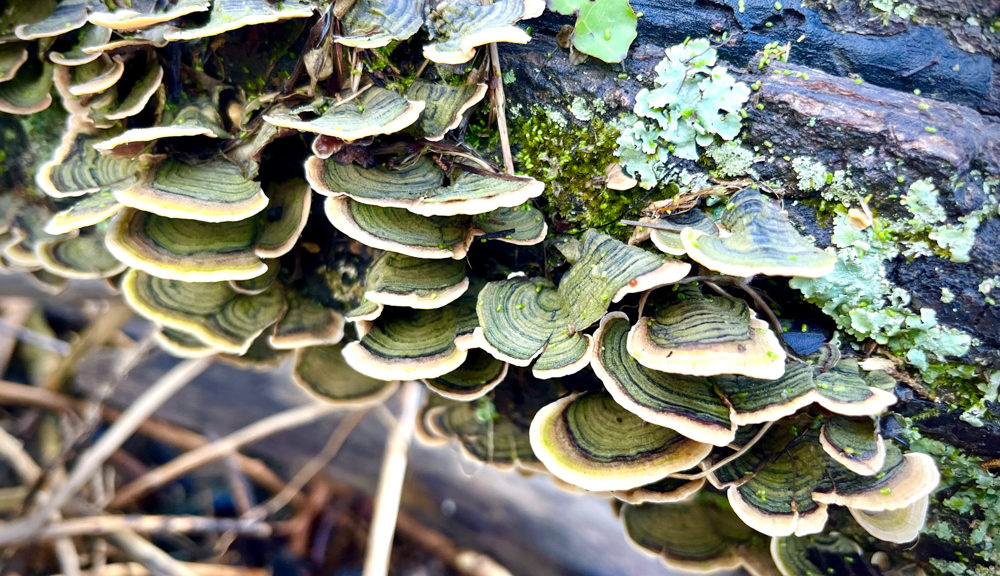
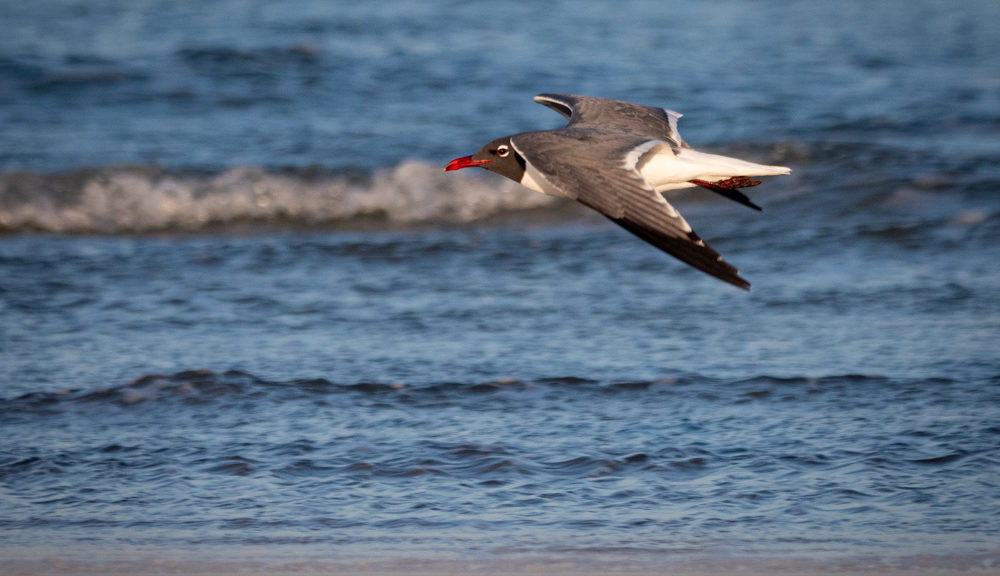
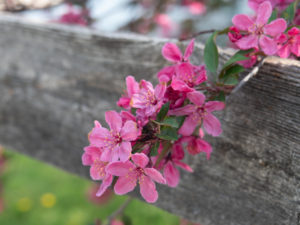
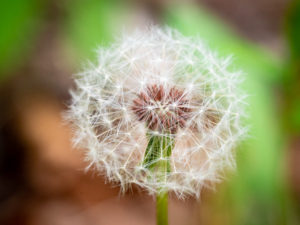 On this dandelion, I might add the words design, seeds, and stem.
On this dandelion, I might add the words design, seeds, and stem.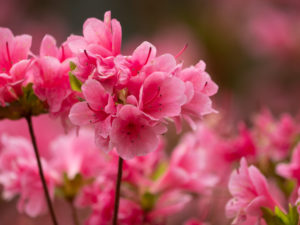
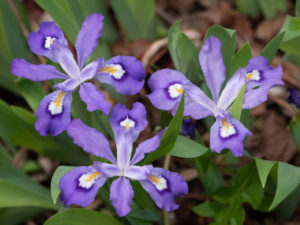
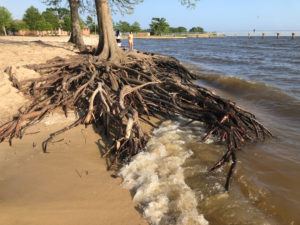
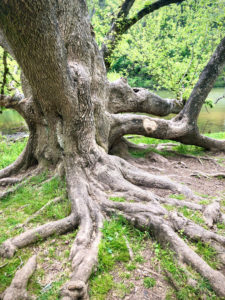
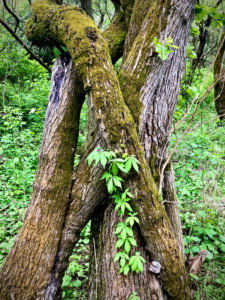
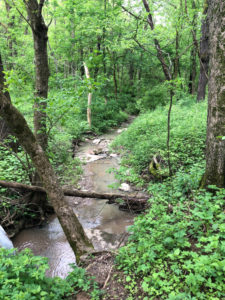
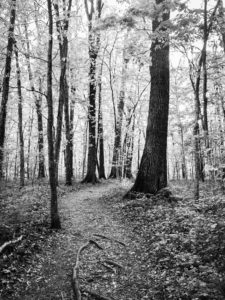
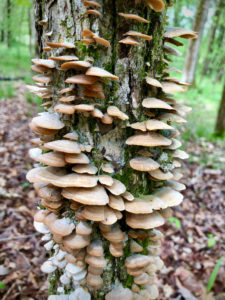 Fungi!!
Fungi!!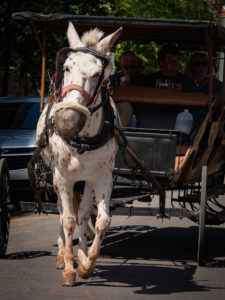 This horse was working the streets of New Orleans.
This horse was working the streets of New Orleans.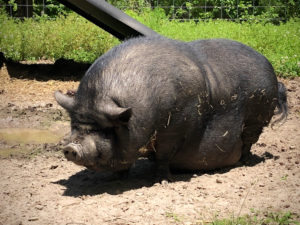 When we stopped to see Ellen’s sister in Mississippi, this guy was in a pen on the property.
When we stopped to see Ellen’s sister in Mississippi, this guy was in a pen on the property.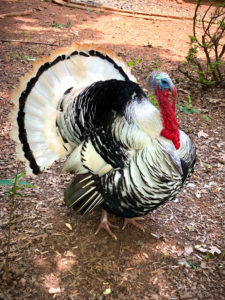
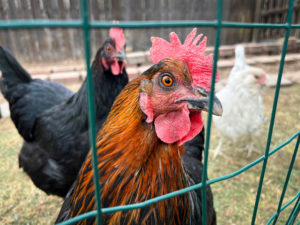
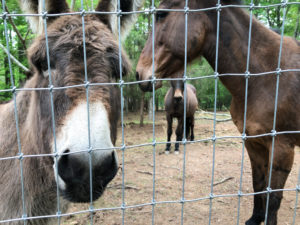 My cousin owns four mules and this donkey on six acres outside of Chapel Hill.
My cousin owns four mules and this donkey on six acres outside of Chapel Hill.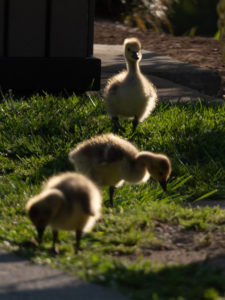 These little cuties were escorted across the street, IN the crosswalk mind you, by their Canada Geese parents in Gatlinburg, TN.
These little cuties were escorted across the street, IN the crosswalk mind you, by their Canada Geese parents in Gatlinburg, TN.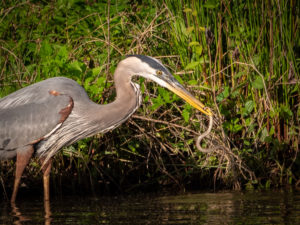 I got to watch this handsome fellow eat some Blue Heron spaghetti at our camp in Mississippi.
I got to watch this handsome fellow eat some Blue Heron spaghetti at our camp in Mississippi.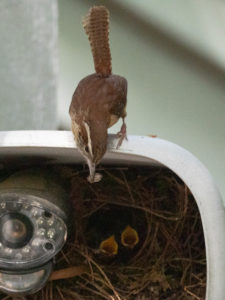 This Carolina Wren was feeding her babies nestled in a home camera cover at our friend’s house in Weaverville, NC.
This Carolina Wren was feeding her babies nestled in a home camera cover at our friend’s house in Weaverville, NC.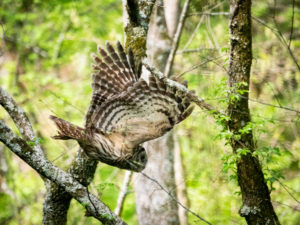 I happened to have my long lens with me on a short hike at our camp in Tennessee when this beauty took off from a tree.
I happened to have my long lens with me on a short hike at our camp in Tennessee when this beauty took off from a tree.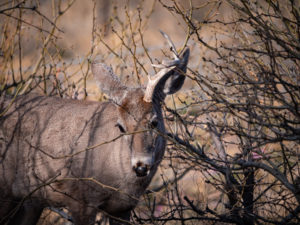
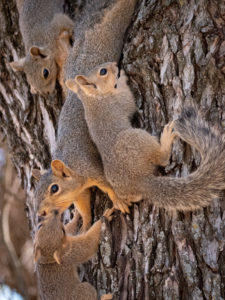
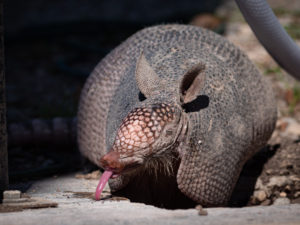
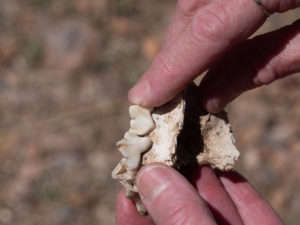 Not sure whose teeth these are but it’s tagged under animals.
Not sure whose teeth these are but it’s tagged under animals.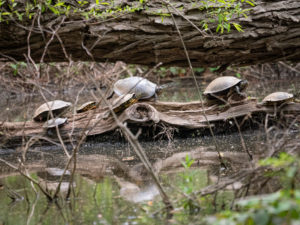 We saw a few turtles along the way which is always a treat. These guys were on a log in a swampy area of a park we walked in near Asheville, NC.
We saw a few turtles along the way which is always a treat. These guys were on a log in a swampy area of a park we walked in near Asheville, NC.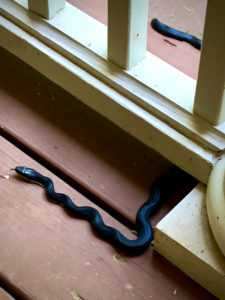 We found this fellow on my cousin’s porch in Hillsborough, NC.
We found this fellow on my cousin’s porch in Hillsborough, NC.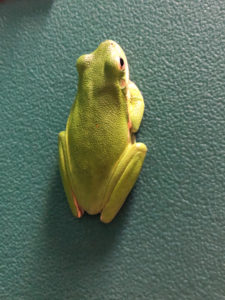 My little green friend kept me company while I used the restroom at our camp in Louisiana.
My little green friend kept me company while I used the restroom at our camp in Louisiana.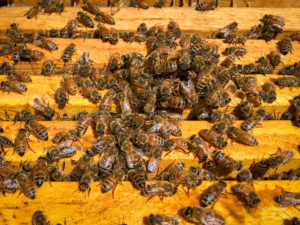 Some of the bees from our beekeeping experience in St. Paul, NE.
Some of the bees from our beekeeping experience in St. Paul, NE.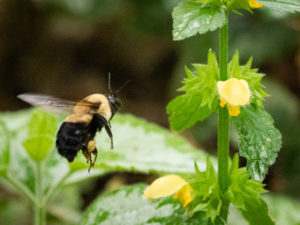 Catching flying insects requires a bit of patience and a lot of pixels to delete later.
Catching flying insects requires a bit of patience and a lot of pixels to delete later.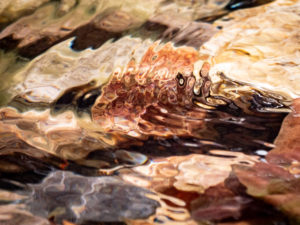 Water is another of my favorite places to hang out. I’m usually playing in, on, or around it and love finding patterns in its movement. This image fits under Nature>Water>clear, stream, pattern.
Water is another of my favorite places to hang out. I’m usually playing in, on, or around it and love finding patterns in its movement. This image fits under Nature>Water>clear, stream, pattern.




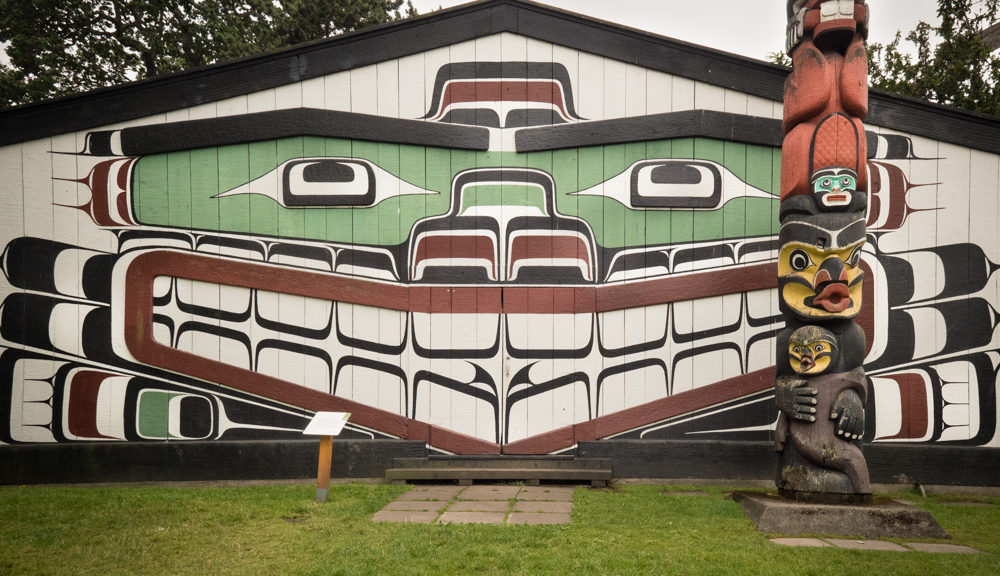
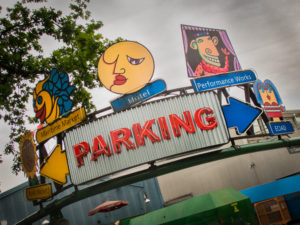
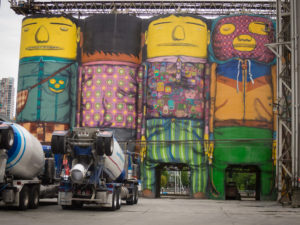
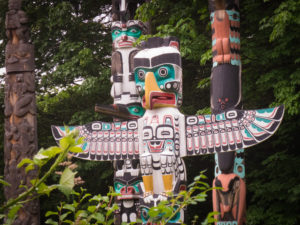
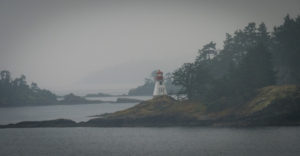
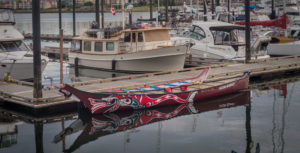 I could shoot boats all day long.
I could shoot boats all day long.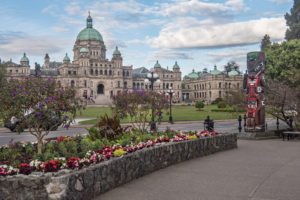 The Parliament Building was amazing.
The Parliament Building was amazing.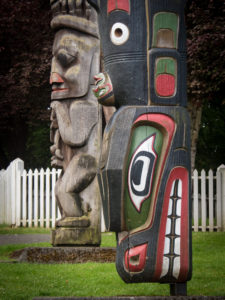
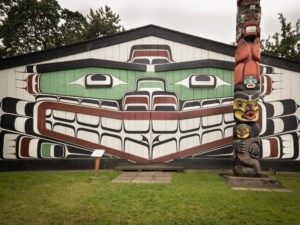
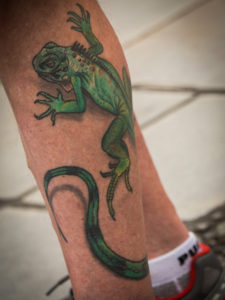
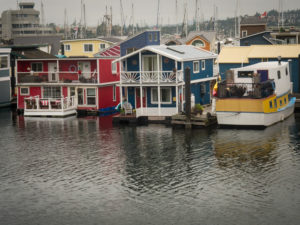
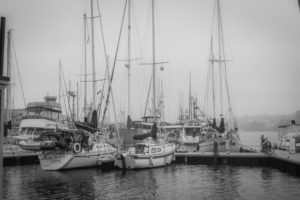
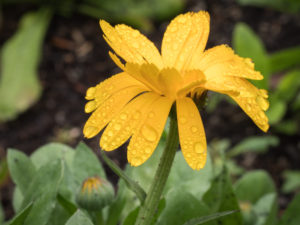
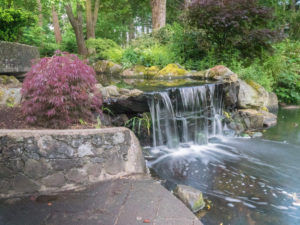
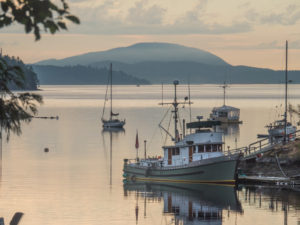
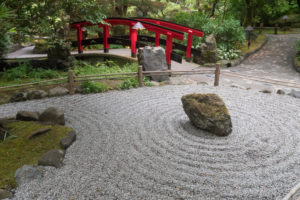
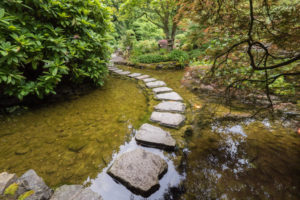
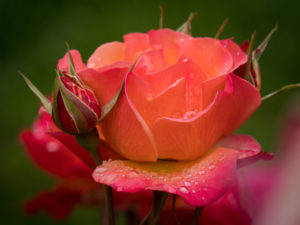
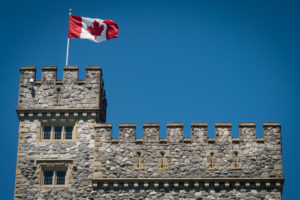
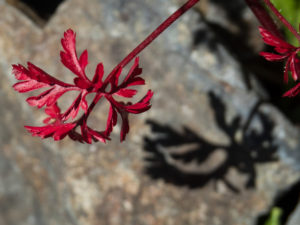
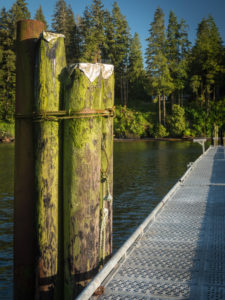
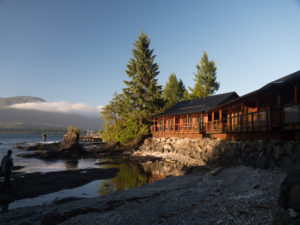 Yes, we stayed n these cabins. Check out the low tide.
Yes, we stayed n these cabins. Check out the low tide.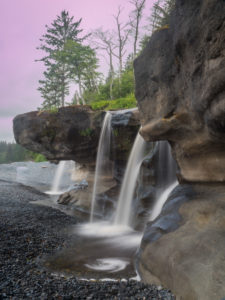
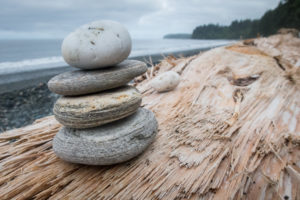
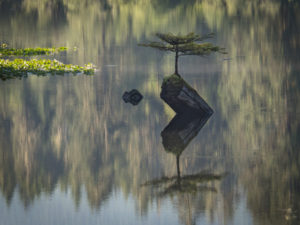
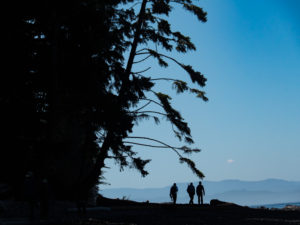
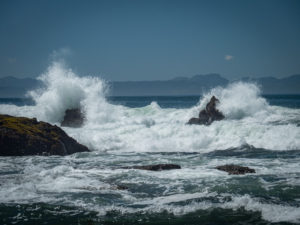
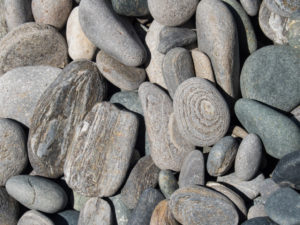
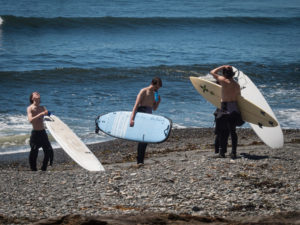
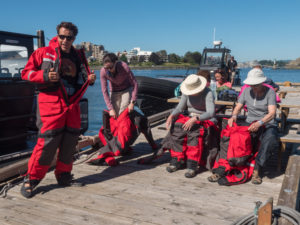 We each had to wear these survival suits. They were really hot but would save our lives should we end up in the ocean.
We each had to wear these survival suits. They were really hot but would save our lives should we end up in the ocean.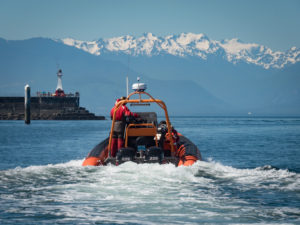
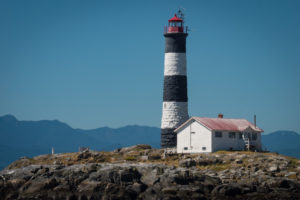
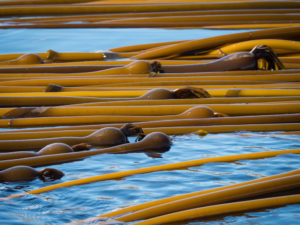
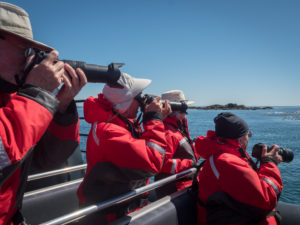
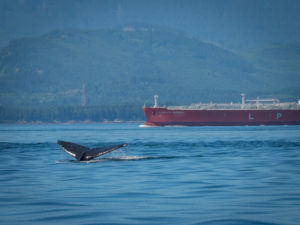 Ocean-going tankers and whale collisions is a real problem.
Ocean-going tankers and whale collisions is a real problem.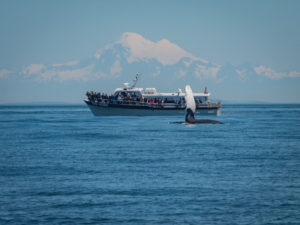 Another tour boat.
Another tour boat.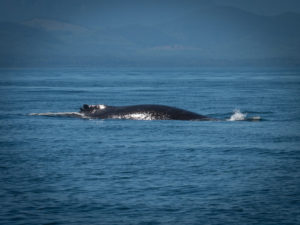
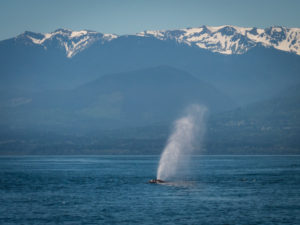




















 This image was super contrasty as I shot it mid-day and din’t use my tripod or diffuser. To help with that issue I turned it into a low contrast black and white image.
This image was super contrasty as I shot it mid-day and din’t use my tripod or diffuser. To help with that issue I turned it into a low contrast black and white image.
 I believe it was this workshop where I first began really noticing and being fascinated with shadows.
I believe it was this workshop where I first began really noticing and being fascinated with shadows. I did break out my macro lens and capture these little red guys crawling all over a cactus flower.
I did break out my macro lens and capture these little red guys crawling all over a cactus flower. Nature’s patterns are everywhere! Shooting macro without a tripod can be difficult as the depth of focus is sometimes as thin as a credit card. Few people can hold steady enough to keep the subject in focus at that level. What I began to realize but couldn’t articulate for several more years is that I’m more of a close-up photographer as opposed to true macro.
Nature’s patterns are everywhere! Shooting macro without a tripod can be difficult as the depth of focus is sometimes as thin as a credit card. Few people can hold steady enough to keep the subject in focus at that level. What I began to realize but couldn’t articulate for several more years is that I’m more of a close-up photographer as opposed to true macro. This image shows the depth of focus situation. The stamen around the glob in the center are in focus while the glob in the middle is not.
This image shows the depth of focus situation. The stamen around the glob in the center are in focus while the glob in the middle is not.


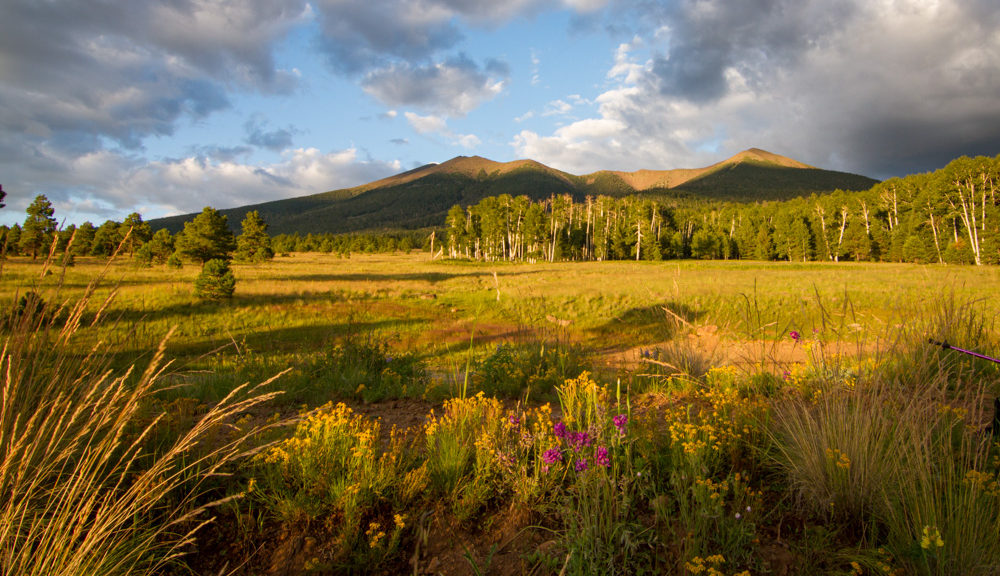
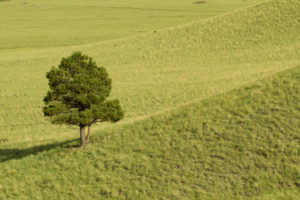
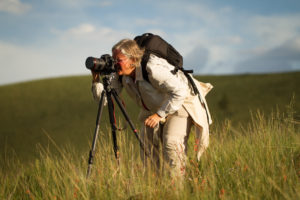
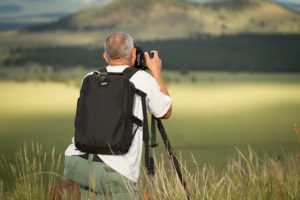
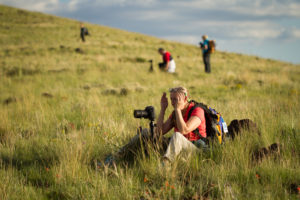 What’s great about our participants is that sometimes they become Arizona Highways PhotoScapes Volunteers! Like Dianne here. I forgot all about meeting her on this trip until I dug out this image!
What’s great about our participants is that sometimes they become Arizona Highways PhotoScapes Volunteers! Like Dianne here. I forgot all about meeting her on this trip until I dug out this image!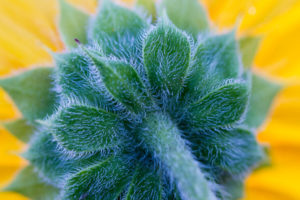 Don’t forget to shoot all sides of your subject. You may surprise yourself with what you find!
Don’t forget to shoot all sides of your subject. You may surprise yourself with what you find!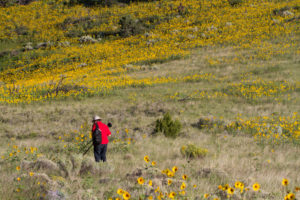 The Sunset Crater area is known for its fields of yellow in August. The red shirt on this participant made for great contrast.
The Sunset Crater area is known for its fields of yellow in August. The red shirt on this participant made for great contrast.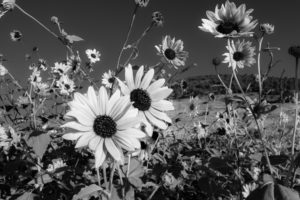 With so much yellow I decided it would be cool to try it in black and white. I was happy with the results. I’ve since gotten into the habit of trying black and white on images whose color or lighting I can’t get quite right.
With so much yellow I decided it would be cool to try it in black and white. I was happy with the results. I’ve since gotten into the habit of trying black and white on images whose color or lighting I can’t get quite right.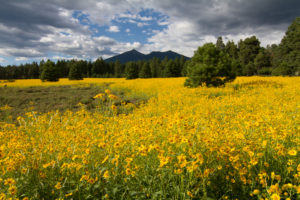
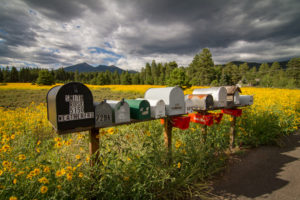 I decided to put the mailboxes in the foreground and really liked the outcome.
I decided to put the mailboxes in the foreground and really liked the outcome.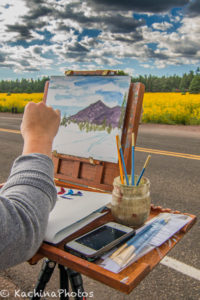
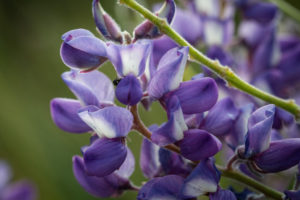
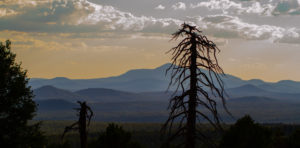
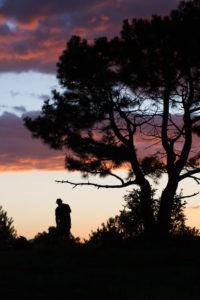
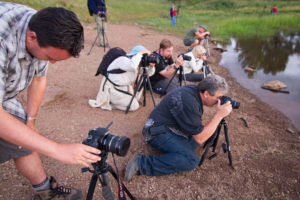
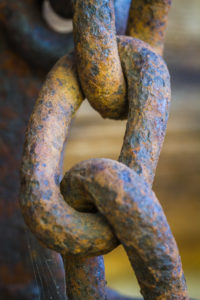
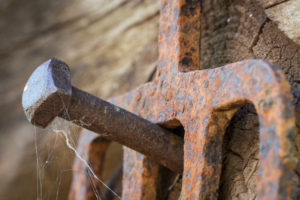
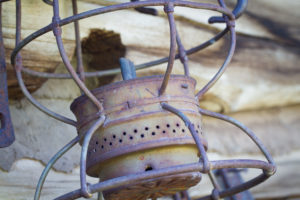










 The train ride culminated at Perkinsville, an abandoned train station on the Arizona Central Railroad. The Verde Cayon Railroad train engine disconnects at Perkinsville moves along a siding and reconnects at the opposite end of the train for the return trip to Clarkdale.
The train ride culminated at Perkinsville, an abandoned train station on the Arizona Central Railroad. The Verde Cayon Railroad train engine disconnects at Perkinsville moves along a siding and reconnects at the opposite end of the train for the return trip to Clarkdale. Our sunset shoot was at Crescent Moon Ranch with an iconic view of Cathedral Rock in Sedona. Most landscapers want people-free images. I find that people make it much more interesting.
Our sunset shoot was at Crescent Moon Ranch with an iconic view of Cathedral Rock in Sedona. Most landscapers want people-free images. I find that people make it much more interesting.


 By our sunset shoot at Marg’s Draw, the sun was already trying to come out.
By our sunset shoot at Marg’s Draw, the sun was already trying to come out. Folks were practicing their settings, compositions, and hyperfocal distance, all while trying to stay out of each other’s shots!
Folks were practicing their settings, compositions, and hyperfocal distance, all while trying to stay out of each other’s shots! The raingear was kept close by as last-minute sprinkles found their way to the ground.
The raingear was kept close by as last-minute sprinkles found their way to the ground. Clouds DO make for spectacular sunsets.
Clouds DO make for spectacular sunsets.
 This crew got out of their jeep to photograph another jeep climbing up the Slickrock as only a jeep can do.
This crew got out of their jeep to photograph another jeep climbing up the Slickrock as only a jeep can do. We also had a model lesson with natural light out on the trail.
We also had a model lesson with natural light out on the trail.


 We stopped to view the Seven Sacred Pools. I feel the cowboy is needed in this image to show scale.
We stopped to view the Seven Sacred Pools. I feel the cowboy is needed in this image to show scale.



 Here is the instructor, Colleen, and two participants photographing bubbles and/or water patterns.
Here is the instructor, Colleen, and two participants photographing bubbles and/or water patterns. Here is one of my water patterns.
Here is one of my water patterns. I love the glow of backlighting.
I love the glow of backlighting.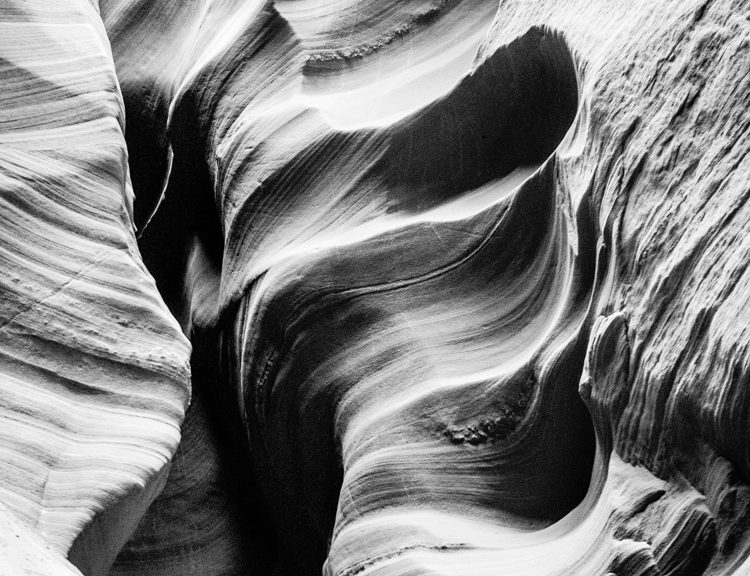
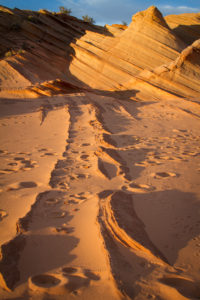 Many times I wish I had paid more attention in my university geology class. This is an area we call The Fins due to the thin delicate “fins” that protrude due to erosion. It’s beautiful at sunset.
Many times I wish I had paid more attention in my university geology class. This is an area we call The Fins due to the thin delicate “fins” that protrude due to erosion. It’s beautiful at sunset.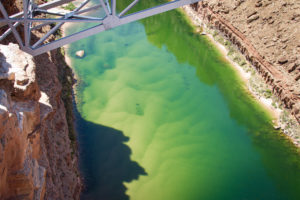 Heading to Lee’s Ferry we cross Navajo Bridge. From here one can see the silt that the Colorado River moves downriver. It is said that Glenn Canyon Dam will fail at some point due to the amount of silt built up in the lake from the Colorado and its tributaries.
Heading to Lee’s Ferry we cross Navajo Bridge. From here one can see the silt that the Colorado River moves downriver. It is said that Glenn Canyon Dam will fail at some point due to the amount of silt built up in the lake from the Colorado and its tributaries.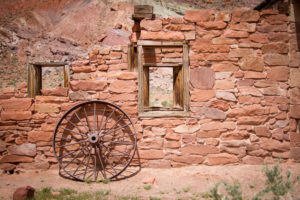 Lee’s Ferry has some cool old buildings made from the surrounding sandstone leftover from when it was a vibrant community.
Lee’s Ferry has some cool old buildings made from the surrounding sandstone leftover from when it was a vibrant community.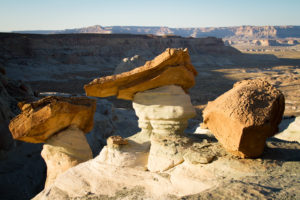
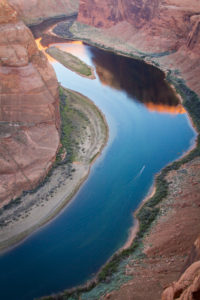 Iconic Horseshoe Bend. It has become quite the popular location. Plan on paying for parking!
Iconic Horseshoe Bend. It has become quite the popular location. Plan on paying for parking!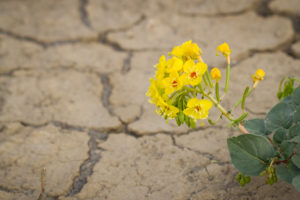 We’ve passed into Utah, through Big Water, and out on Highway 12, a dirt road that leads to the north end of the lake. It was a dry year.
We’ve passed into Utah, through Big Water, and out on Highway 12, a dirt road that leads to the north end of the lake. It was a dry year.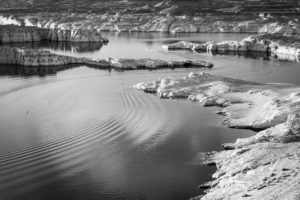 We hit a couple of Lake Powell overlooks.
We hit a couple of Lake Powell overlooks.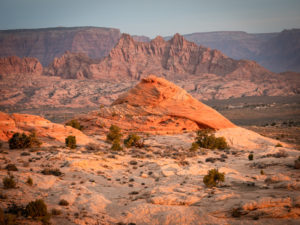 “Little Cut” is an area of “tee pees” lit up beautifully by the morning sun.
“Little Cut” is an area of “tee pees” lit up beautifully by the morning sun.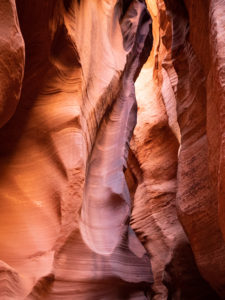
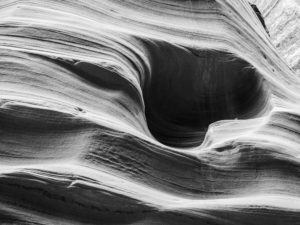
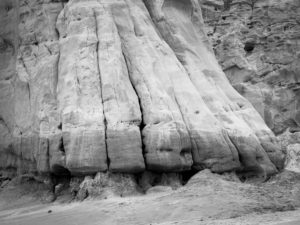
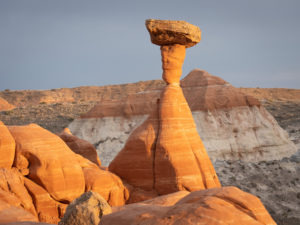

 Shadows are always fun. Here is an image of three of our party walking down the wash bed shortly after finishing the initial mile and a half switchback descent. We walked on terrain like this for eight and a half more miles until we reached the campground.
Shadows are always fun. Here is an image of three of our party walking down the wash bed shortly after finishing the initial mile and a half switchback descent. We walked on terrain like this for eight and a half more miles until we reached the campground. There were still some flowers in bloom as we walked down.
There were still some flowers in bloom as we walked down. This was a great alcove. On a much smaller scale it reminded me of Red Wall Cavern on the Colorado River.
This was a great alcove. On a much smaller scale it reminded me of Red Wall Cavern on the Colorado River. Apparently stacking and placing rocks and pebbles in erosion holes is a thing on this hike. We ran into them frequently. At first we thought they were naturally placed there via flash flooding but this little rock cairn gave it away.
Apparently stacking and placing rocks and pebbles in erosion holes is a thing on this hike. We ran into them frequently. At first we thought they were naturally placed there via flash flooding but this little rock cairn gave it away. We’re getting closer!!
We’re getting closer!! As we enter the outskirts of the village we run into another sign offering breakfast. Supai is kept safe by the two rock sentinels seen here in the background.
As we enter the outskirts of the village we run into another sign offering breakfast. Supai is kept safe by the two rock sentinels seen here in the background. Cottonwood trees abound down here. They provide much needed shade for the hot summer months. To the left is their helicopter landing field.
Cottonwood trees abound down here. They provide much needed shade for the hot summer months. To the left is their helicopter landing field. Cottonwood tree knots are amazing. Such character!
Cottonwood tree knots are amazing. Such character! We passed this church, complete with the dog sleeping out front, on our way through the village to the campground.
We passed this church, complete with the dog sleeping out front, on our way through the village to the campground. This is the sketchy bridge we had to cross to get to our campsite. Luckily no one fell in. If they had, though, the water is a pleasant 69 degrees year round.
This is the sketchy bridge we had to cross to get to our campsite. Luckily no one fell in. If they had, though, the water is a pleasant 69 degrees year round. Evenings were chilly but the days warmed up nicely and allowed us to wear shorts, sandals and sleeveless tops. In October we only had about 3-3.5 hours of sunlight in camp. Brrr. No wonder there weren’t as many people in camp as compared to when we’ve been there in April.
Evenings were chilly but the days warmed up nicely and allowed us to wear shorts, sandals and sleeveless tops. In October we only had about 3-3.5 hours of sunlight in camp. Brrr. No wonder there weren’t as many people in camp as compared to when we’ve been there in April.